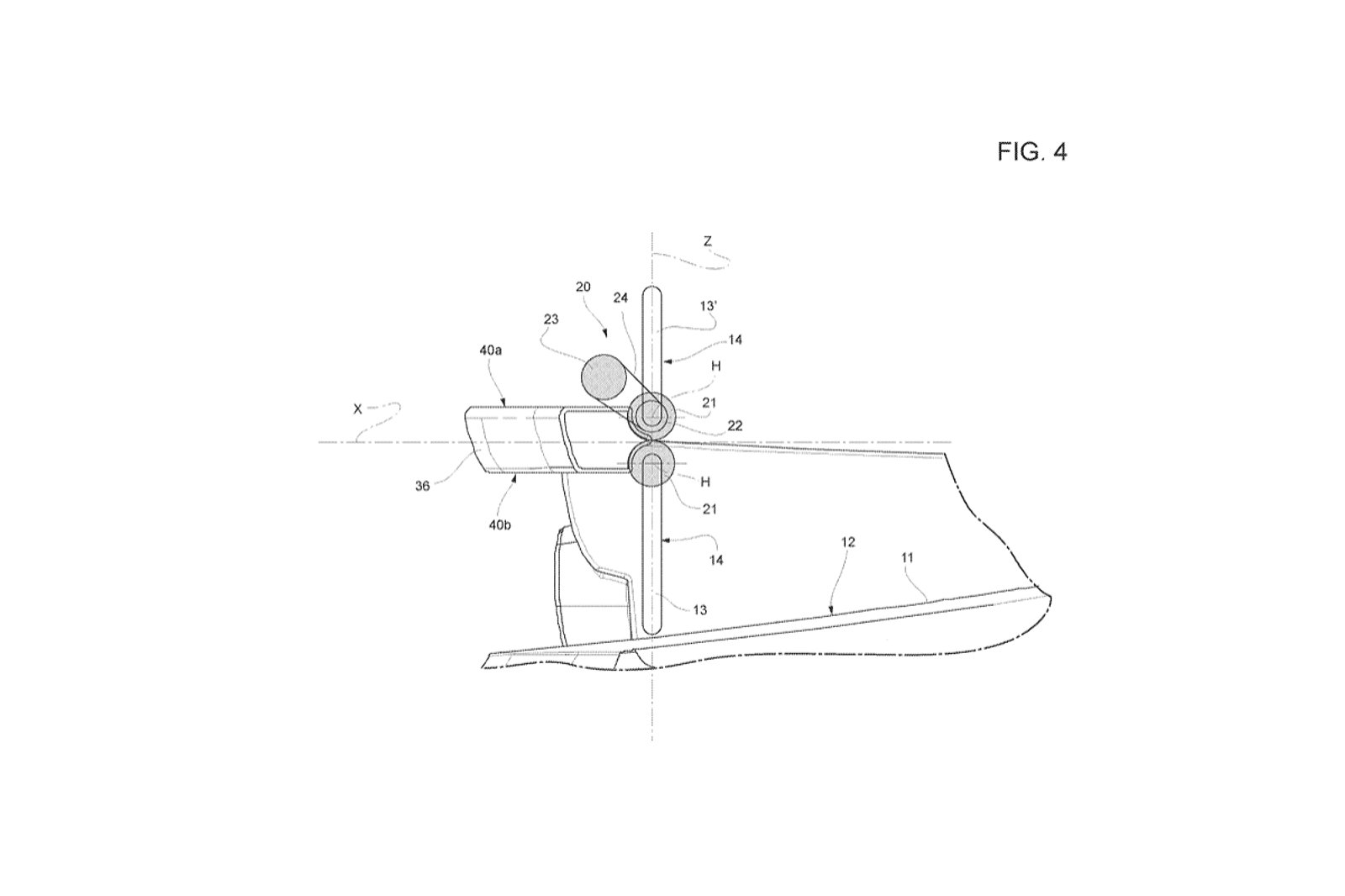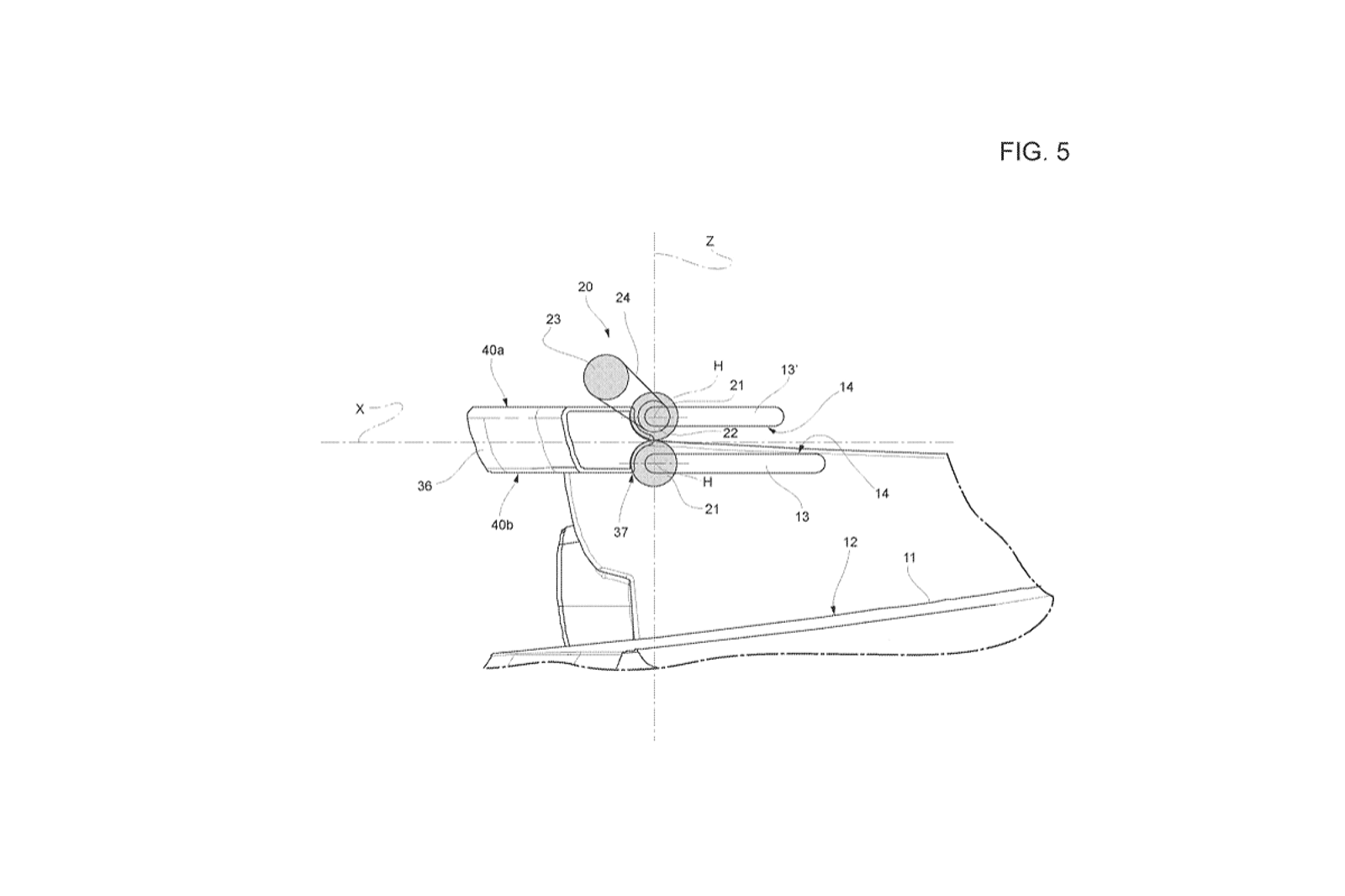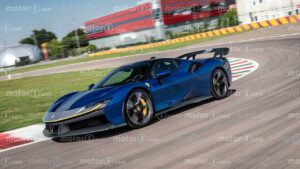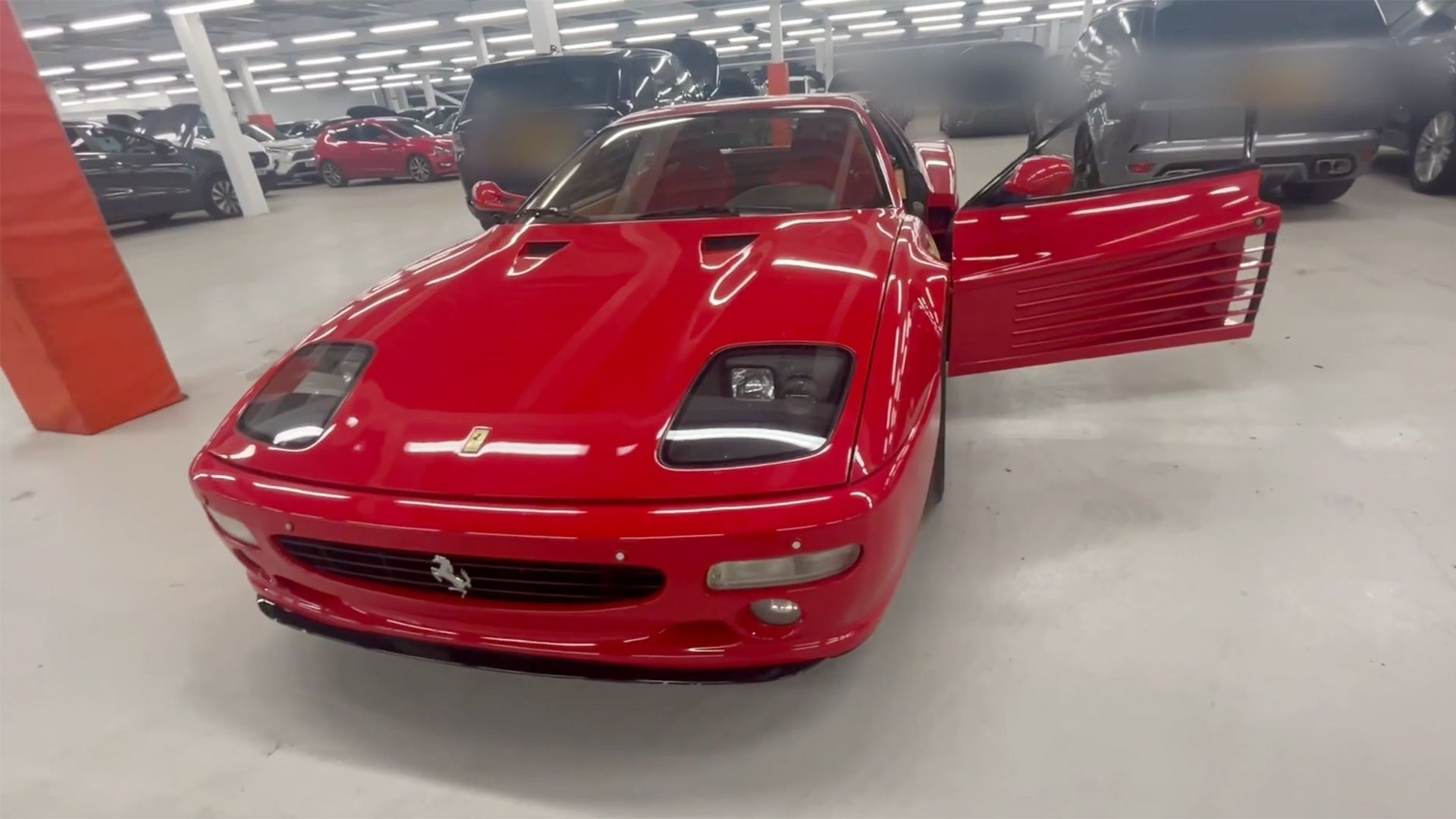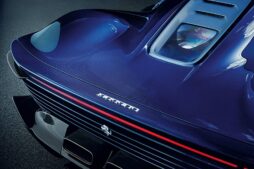Dual Function: Simple Mechanics for a Wing-Spoiler Hybrid
Ferrari has always embraced cutting-edge technology, and this certainly holds true for their dedication to aerodynamics. From the noteworthy S-duct found on the 488 Pista to the innovative autonomously controlled flaps beneath the F12tdf, Ferrari has consistently pushed the boundaries of aerodynamic advancements. In their most recent filing with the United States Patent and Trademark Office, which was recently discovered by CarBuzz, the renowned Italian car manufacturer continues to delve deeper into the realm of active aerodynamics with a brand new rear spoiler design. This design cleverly integrates the superior downforce capabilities of a traditional wing with the streamlined efficiency of a sleek body. Essentially, Ferrari has merged the concepts of both spoilers and wings into one revolutionary system.
The exclusive Ferrari KC23 custom-made sports car showcased dynamic body components that were capable of transitioning from an open to a closed state. However, the back deck retained its detachable wing. With the incorporation of these novel patent concepts, the inclusion of the wing may have been rendered obsolete.
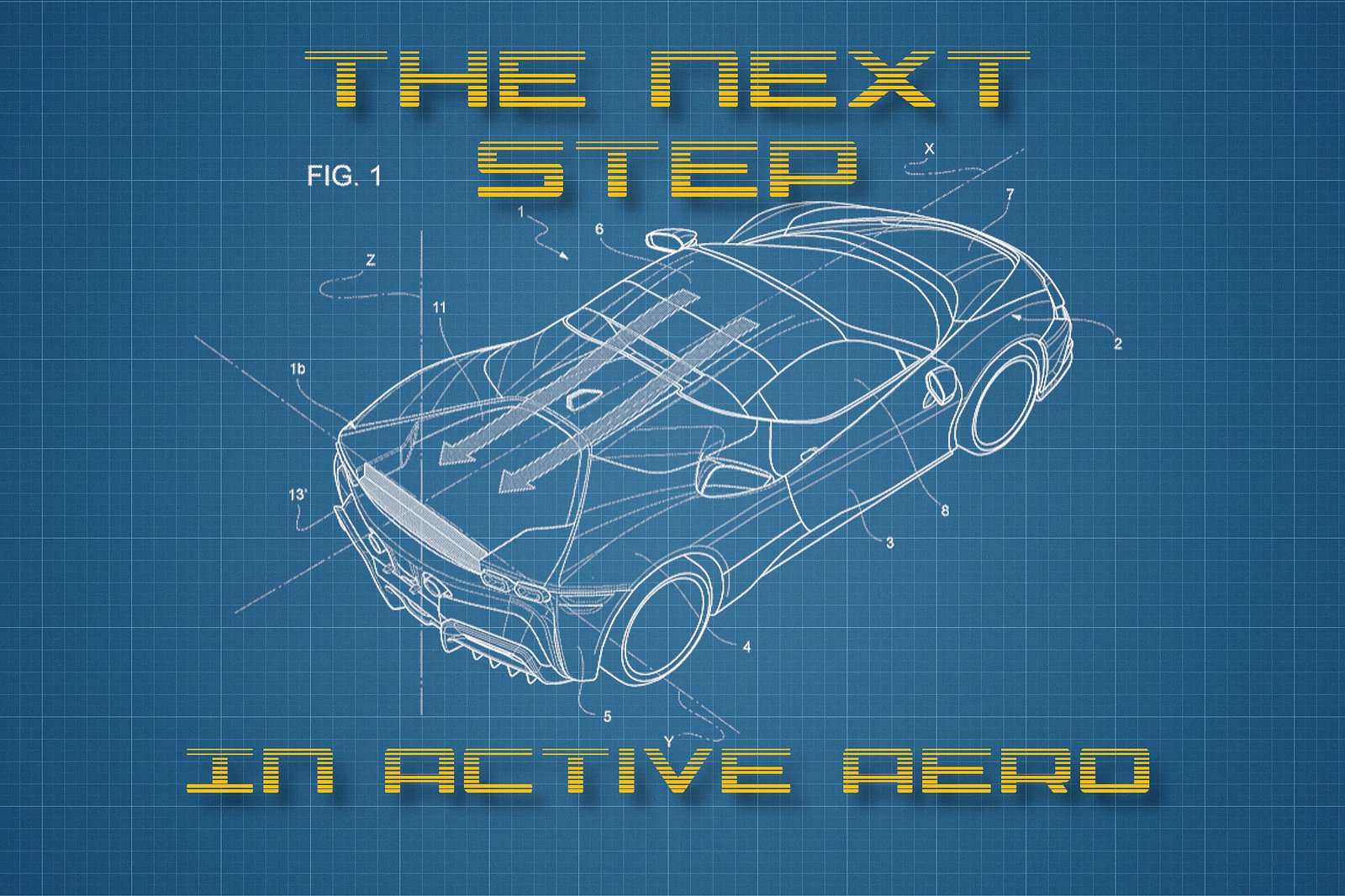
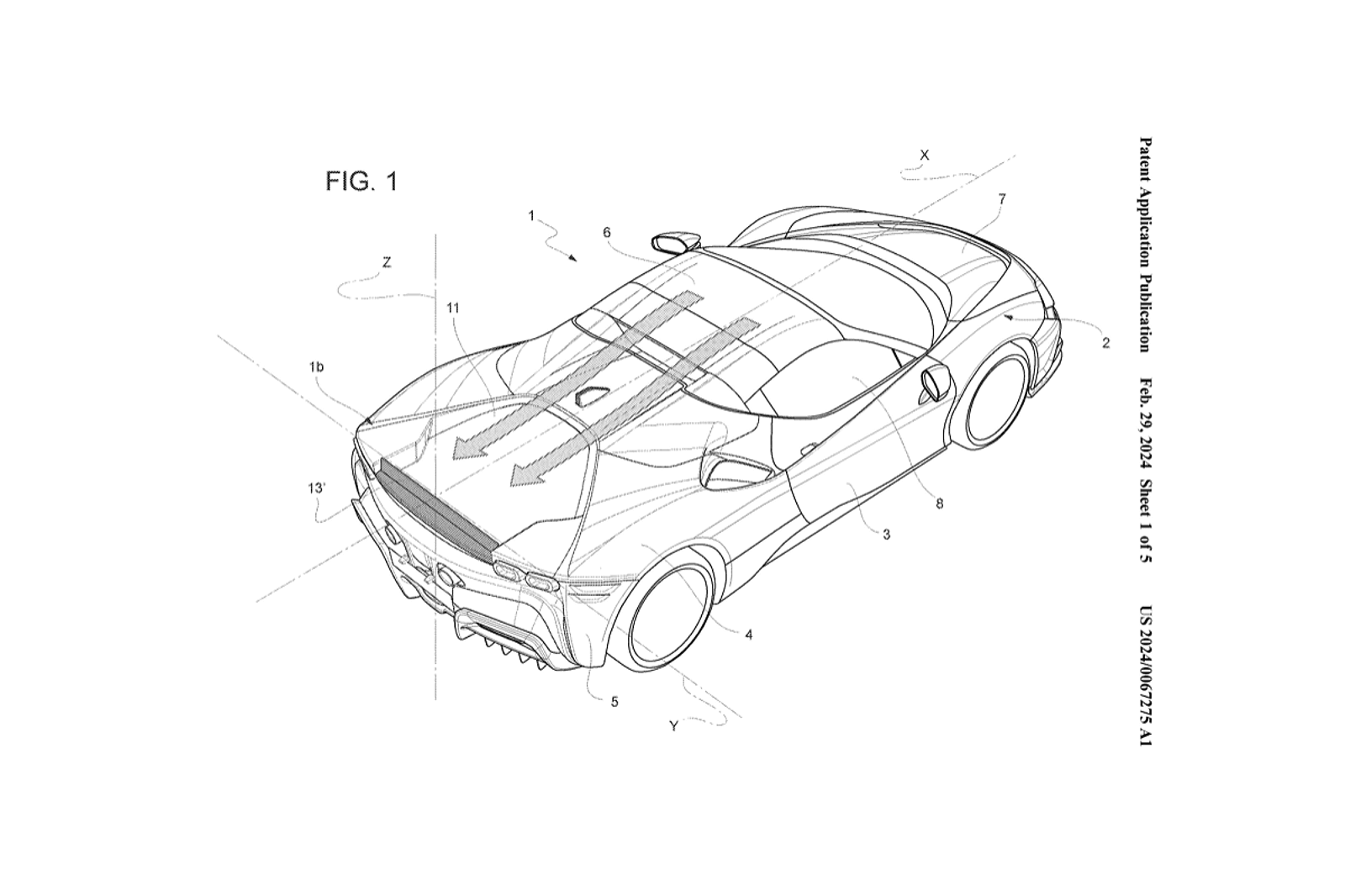
The latest rendition bears a striking resemblance to the S-duct of the 488 Pista, but with a notable twist. Instead of air being sucked in from the front, it now flows over the roof, down the engine cover, and exits through the top of the rear fascia of the high-performance vehicle. Playing a crucial role in stabilizing this airflow is a crossbeam that extends across and above the indented channel in which the air passes. The pivotal component of this design is located just prior to the aforementioned crossbeam.
In the following illustration, a set of blades is arranged in a stacked formation. In the high-downforce configuration of the system (depicted in Figure 2), these blades are positioned at a right angle to the wing’s crossmember, effectively closing off the gap that would normally allow air to pass through. This technique, known as “spoiling,” interrupts the flow of air and generates a region of increased downward force. However, when the flaps or blades are aligned parallel to the crossmember, the airflow can be re-established, resulting in a decrease in drag and an improvement in overall efficiency.
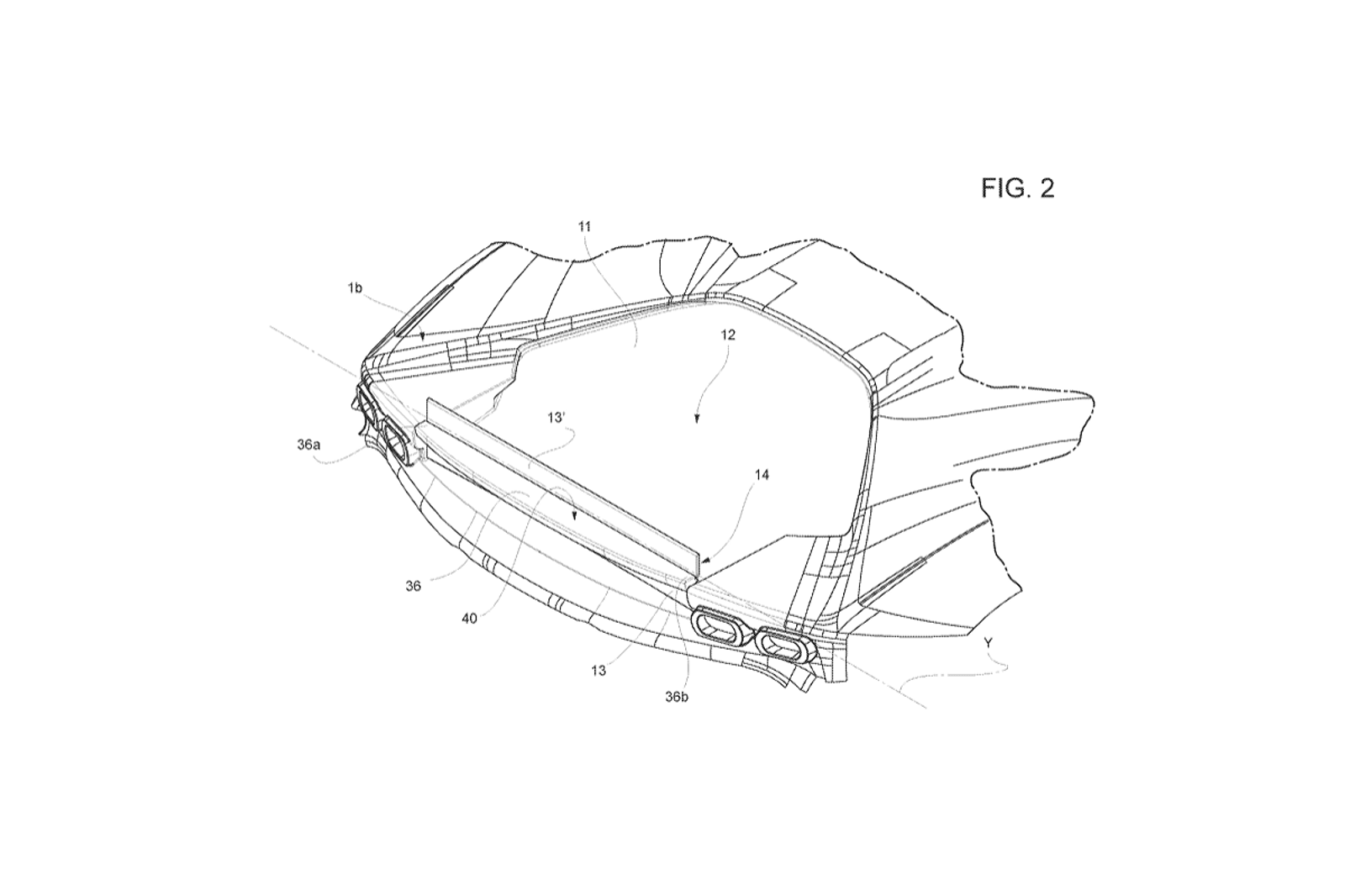
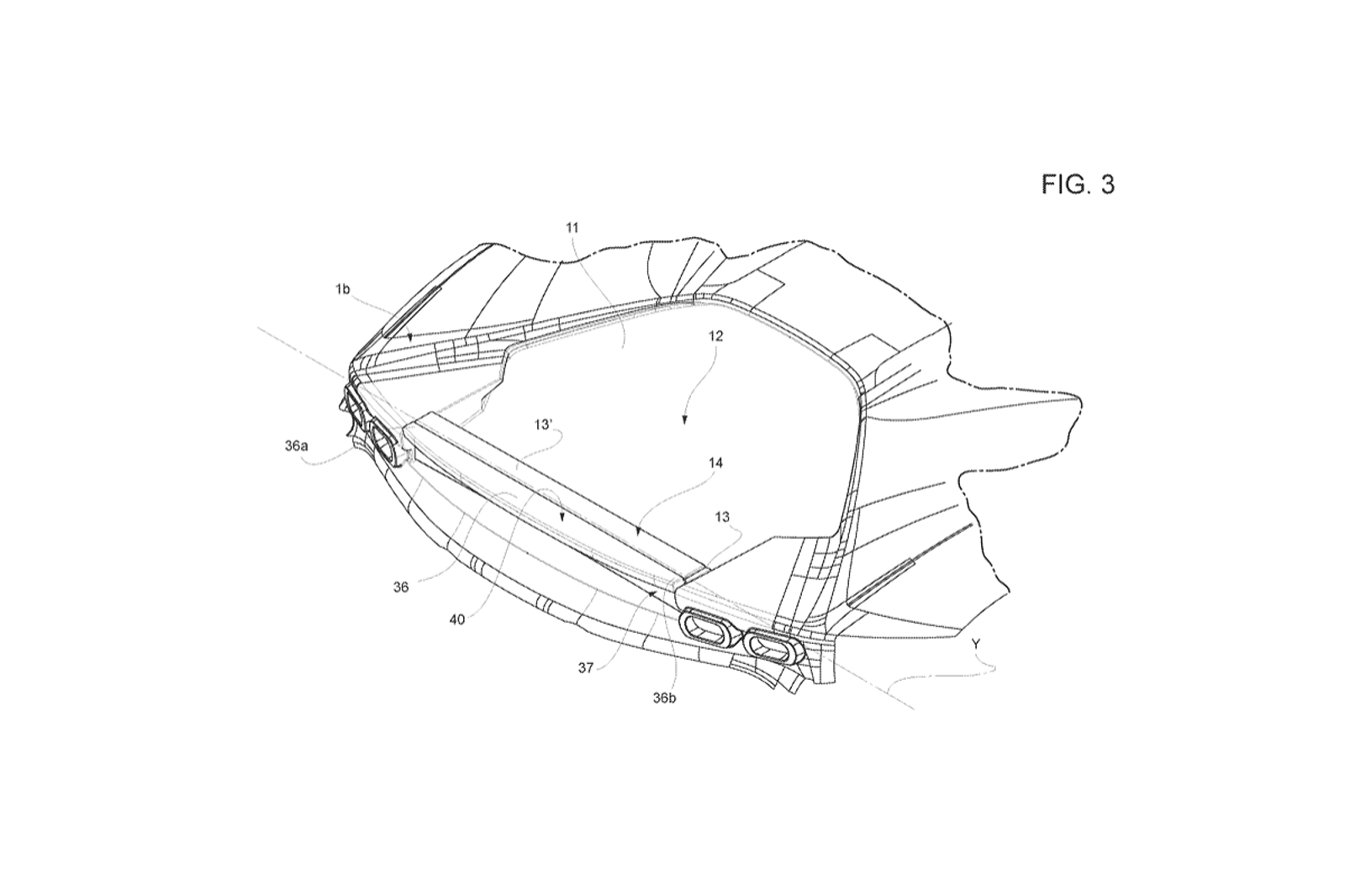
As shown in the accompanying images, the “faces” or front sections of the blades or flaps are positioned in alignment with each other. A sophisticated pulley system ensures that the movement of one flap is precisely replicated by the other. This ingenious design requires minimal energy to activate the aero device. Furthermore, due to the orientation of the blades (with their faces directed towards the front of the vehicle and thus, the airflow), even less energy is needed. Once the blades are slightly opened, the resistance of the wind takes over and completes the task. Although the images feature a Ferrari SF90, this concept can be applied to any Ferrari model. Additionally, this design can also be utilized at the front of the car, and there is potential for further improvement (Ferrari has mentioned the possibility of incorporating more and smaller flaps).
Ferrari is set to release three new vehicles in 2024, with the possibility of incorporating this technology in one of them. It is a promising sign of a potential revival of sleek and minimalistic design, as opposed to the excessive large wings and bold vents seen on the SF90 XX twins.The Italian car manufacturer has been known for pushing the boundaries of performance and style, but it seems they are also moving towards a more environmentally-friendly approach. This may come as a surprise to some, as high-performance cars are often associated with gas-guzzling engines and carbon emissions. However, with the rise of electric and hybrid technology, Ferrari is embracing this shift in the industry.While we may not know the exact details of this new technology, it’s likely that it will align with Ferrari’s commitment to sustainability. The company has already introduced their first ever production hybrid vehicle, the SF90 Stradale, which boasts impressive speed and efficiency without sacrificing luxury.In recent years, we have seen other luxury car brands, such as Porsche and Lamborghini, making moves towards electrification as well. This suggests that the demand for high-performance, eco-friendly vehicles is on the rise.Ferrari’s announcement of these three new cars is another exciting development for fans and car
